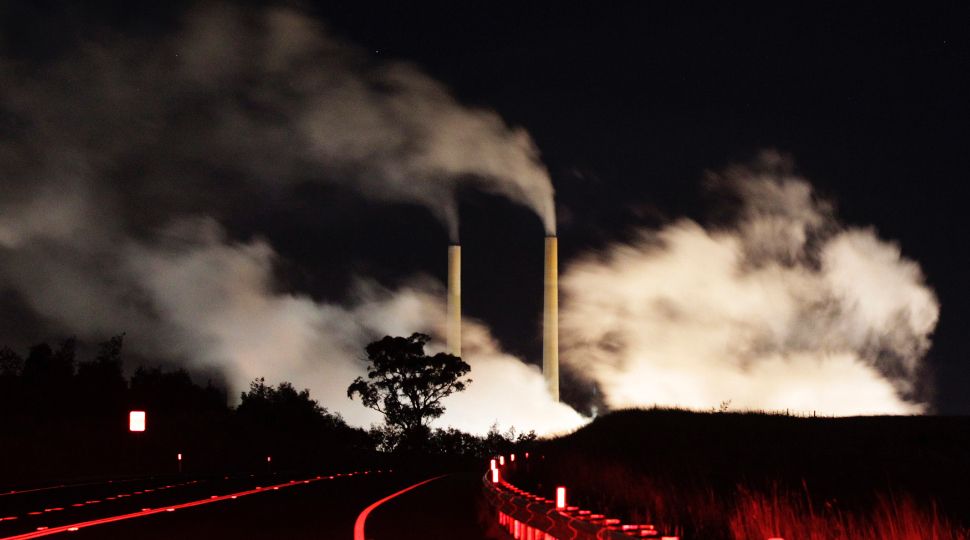Border Carbon Tax: Conditional Help for Industry

One problem with the EU’s climate policy pillar—the Emissions Trading System (ETS)—is that it imposes an obligation to purchase CO2 emissions allowances only on European producers of goods consumed in the EU. This creates the risk of carbon leakage, which is when industries, trying to lower manufacturing costs, move outside the EU to places where there are no such levies. Hence, global climate protection goals are not being achieved because the pollution still exists but has been relocated outside Europe. In addition, the EU’s economy might suffer from the loss of competitiveness and jobs. So far, the Union has managed to limit this risk by distributing free emissions allowances to entities in energy-intensive sectors (e.g., cement and steel producers). However, this decreases the incentives to mitigate emissions (although only the most efficient installations receive full support). The problem will reappear if the reduction targets are moved up to 2030 or the use of free allowances is restricted. A potential remedy to these problems could be a Border Carbon Tax (BCT).
Taxing Imported Products’ Emissions
Under the BCT, a levy would be imposed on imported goods that could equalise the cost of CO2 emissions, whether within or outside the EU. The BCT idea appeared for the first time when U.S. President George W. Bush blocked the ratification of the Kyoto Protocol in 2001, followed by attempts to draft such a tax in the EU after the failed negotiations on the global climate agreement in Copenhagen in 2009. The issue returned for the third time after President Donald Trump announced the U.S. withdrawal from the Paris Agreement in 2017. In September this year, the new president of the European Commission (EC), Ursula von der Leyen, asked her candidate for commissioner of the economy to prepare BCT proposals in cooperation with the commissioner for trade and the vicepresident of the European Commission tasked with overseeing the European Green Deal. The introduction of the BCT is openly supported by France but other countries are waiting for the EC project. Although no official proposal has been put forward yet, the funds raised from the tax would probably go into the EU budget first.
However, the BCT also requires very complex implementation. Goods are already undergoing lengthy customs procedures and it would be necessary to add a tax assessment to them. The amount of the tax would depend on whether the producer had incurred CO2 costs in the base country. To calculate the BCT, it is necessary to determine these costs in the exporting country, estimate the GHG emissions of the manufacturing process in question, and deduct rebates (e.g. free allowances) granted to EU producers. It would be even more difficult to calculate the emissions from the production of goods made in several countries. That is why some experts propose limiting the BCT to a few resource sectors, such as cement, steel, or aluminium.
The tax would also have to comply with two WTO fair trade principles: non-discrimination between different importers and non-discrimination between domestic and foreign products. Although the organisation allows trade restrictions for environmental reasons, it is not clear from WTO practice whether this includes climate protection using the BCT.
Potential Market Effects
The BCT is meant to even out climate policy costs for producers inside and outside the EU. Maintaining the allocation of free emissions allowances for industry after its introduction would require a tax deduction corresponding to their price. The effect of the BCT would then be marginal and would not effectively encourage producers exporting to the EU to reduce their CO2 emissions. Therefore, ensuring competitiveness and achieving climate goals could only be accomplished by withdrawing the free allowances. This, in turn, would increase production costs in the EU, but also equally on imports from abroad. The scale of support within the EU based on the emissions efficiency of production would also disappear. At the same time, the BCT would promote emissions reduction by decreasing the need to purchase allowances, which might allow firms to gain an advantage over competitors, whether within or outside the EU.
Applying the BCT to all industries covered by the ETS or bearing the indirect costs of its operation would be beneficial for them because it would reduce the imbalance in production costs relative to foreign competitors. However, it would be difficult to put it into practice, especially if the amount of the fees depends on the emissions of electricity sources used to produce goods.
The introduction of an additional import tax would also affect sectors manufacturing processed goods that use raw materials such as cement, steel, and aluminium. The BCT would increase the prices of those materials, which would in turn increase the cost of the produced goods (although only to a small extent if the free allowances are maintained). From a consumer perspective, this would have a small impact on the prices of individual products, as the allowance per tonne of CO2 emissions is currently as much as €30.
There is also a possibility to introduce the BCT on exported goods. This would compensate for costs incurred by European companies in purchasing allowances to compete with producers operating in markets where there are no such fees. However, its introduction would expose the entire mechanism to the charge that it is an export subsidy and reduce the effectiveness of mitigation efforts in the EU.
International Consequences
The BCT can be an important tool to put pressure on other countries that do not impose fees for GHG emissions. Until they do that, their companies that export goods to the EU will have to pay at the border. This raises the risk of legal disputes because the affected countries will seek to challenge the BCT through the WTO’s dispute-settlement system. There is no precedent in this matter to predict a panel’s verdict. Although the tax may be considered WTO compliant, there is the risk that a panel will judge it to be an illegal additional import charge. At the same time, it is worth noting that with the ongoing paralysis of the WTO dispute-settlement system as a result of U.S. actions, the implementation of even a potentially illegal BCT cannot, for now, be legally questioned.
In view of the continuing trade tensions between the EU and the U.S., the introduction of the BCT could trigger an escalation of that dispute. So far, Trump has been delaying a decision on imposing additional customs duties on the import of cars and automotive parts, but it should be assumed that the implementation of the BCT would be met with just such a response from the current U.S. administration. The tax could also expose the EU to retaliation from other countries, including Russia or China (where an ETS is operating in some provinces and a countrywide system is to be implemented), which would consider the fees to be a protectionist tool, not purely to support climate policy. Cooperation with other countries on the introduction of the BCT could diminish the risk of these kinds of negative consequences.
Conclusions for Poland
The introduction of the BCT could be potentially positive for Poland. Polish producers from industries covered by the tax would then not be threatened by cheaper competition from outside the EU based on CO2 emissions costs, which would be equalised under the system. The more products the tax covers, the stronger the support from energy-intensive industries, which are exposed to additional costs in connection with the functioning of the ETS.
In practice, the benefits to Poland of the BCT depend on the progress of the country’s transition to a lowcarbon economy. Combining the introduction of a tax with the withdrawal of free allowances would, however, force producers in the EU, including in Poland, to pay the full price for emissions allowances. The free system will probably unwind with the intensification of EU activities to achieve climate neutrality by 2050. Competitors from the EU and outside it (covered by the BCT) would then strive to increase the efficiency of installations and reduce emissions so as not to incur additional costs. Therefore, maintaining the competitiveness of production in Poland would only be possible by increasing innovation and investing in new industrial installations. This could be particularly important after 2030, along with the formulation of new reduction targets and a decrease in support for sectors exposed to the risk of carbon leakage.




